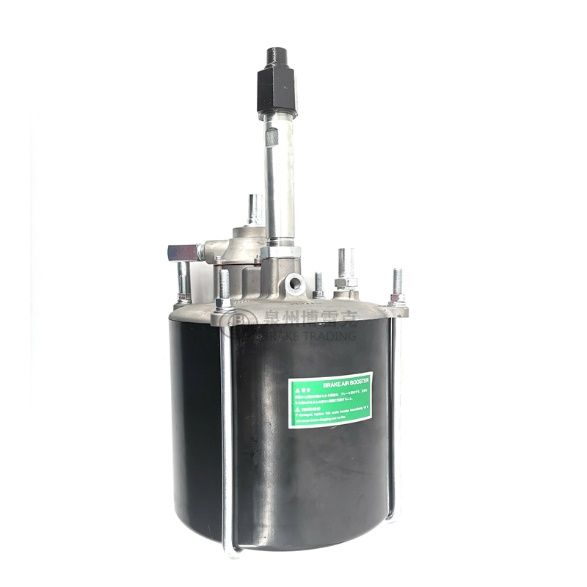It adopts the arrangement that the left front wheel brake cylinder and the right rear wheel brake cylinder are one hydraulic circuit, and the right front wheel brake cylinder and the left rear wheel brake cylinder are another hydraulic circuit. The vacuum booster that combines the air chamber of the vacuum booster with the control valve generates thrust when it works, and acts directly on the piston push rod of the brake master cylinder as the pedal force.
In the non-working state, the return spring of the control valve push rod pushes the control valve push rod to the locking position of the right lock, the vacuum check valve port is in the open state, and the control valve spring makes the control valve cup close contact with the air valve, thus closing the air valve port. At this time, the vacuum chamber and the application chamber of the vacuum booster are respectively connected with the application chamber channel through the vacuum chamber channel of the piston body through the control valve chamber and isolated from the outside atmosphere. After the engine is started, the vacuum degree at the intake manifold of the engine increases, and then the vacuum degree of the vacuum chamber and the application chamber of the vacuum booster increases, and they are ready to work at any time.
When braking, press the brake pedal, and the pedal force acts on the control valve push rod after being amplified by the lever. First, the return spring of the control valve push rod is compressed, and the control valve push rod and the air valve column move forward. When the control valve push rod moves forward to the position where the control valve cup contacts the vacuum check valve seat, the vacuum check valve port is closed. At this time, the vacuum chamber and application chamber of the booster are cut. At this time, the end of the air valve column is just at the junction with the surface of the reaction plate. As the control valve push rod continues to move forward, the air valve port will open. After passing through the filter, the outside air enters the application air chamber of the booster through the open air valve port and the channel to the application air chamber, and the servo force is generated.
When the brake is canceled, with the reduction of input force, the control valve push rod moves backward. After the vacuum check valve port is opened, the vacuum chamber and the application chamber of the booster are connected, the servo force decreases, and the piston body moves backward. In this way, with the gradual reduction of the input force, the servo force will also decrease in a fixed proportion until the brake force is completely released.
Post time: Mar-17-2023

